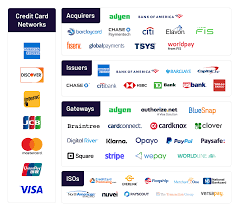The Evolution of Payments: From Cash to Contactless
In today’s fast-paced digital age, the way we make payments has undergone a significant transformation. Gone are the days when cash was king; now, contactless payment methods are taking over the financial landscape.
With the rise of e-commerce and mobile banking, consumers are increasingly opting for convenient and secure ways to pay for goods and services. From online transactions to tap-and-go payments, technology has revolutionised the payment industry.
Contactless payments, in particular, have gained popularity due to their speed and ease of use. With a simple tap of a card or mobile device, transactions can be completed in seconds, making shopping more efficient than ever before.
Security is also a key factor driving the shift towards digital payments. Advanced encryption technologies and biometric authentication methods provide consumers with peace of mind knowing that their financial information is protected.
Furthermore, the COVID-19 pandemic has accelerated the adoption of contactless payments as people seek safer ways to make transactions without physical contact. This trend is likely to continue as society embraces a more hygienic approach to everyday activities.
As we move towards a cashless society, it is essential for businesses to adapt to these changing payment trends to meet consumer expectations. Embracing innovative payment solutions not only enhances customer experience but also streamlines operations and improves efficiency.
The future of payments is undoubtedly digital, with contactless technology leading the way. By staying informed and embracing these advancements, both consumers and businesses can enjoy a seamless and secure payment experience in the modern world.
Frequently Asked Questions About Payment Methods and Systems
- What are different means of payments?
- What does payment mean?
- What are the 4 types of payments?
- What do you understand by payments?
- Which of the following are the payment systems?
- What are the payments in accounting?
- How do I access my Google payments?
- What is called payment?
What are different means of payments?
There are various means of payments available to consumers in today’s digital age. Some common methods include cash, credit and debit cards, bank transfers, mobile wallets, and contactless payments. Cash remains a traditional form of payment accepted by most businesses, while credit and debit cards offer convenience and security for in-store and online transactions. Bank transfers allow for direct transfer of funds between accounts, ideal for larger transactions. Mobile wallets enable users to store payment information on their smartphones for quick and easy payments. Contactless payments have gained popularity for their speed and simplicity, allowing users to make transactions with a simple tap of their card or device. Each payment method offers its own benefits and caters to different preferences and needs of consumers in the modern financial landscape.
What does payment mean?
Payment refers to the transfer of money, goods, or services in exchange for a product or service received. It is a fundamental aspect of any transaction, serving as the final step in completing a commercial exchange. Payments can take various forms, including cash, credit/debit cards, bank transfers, and digital wallets. Essentially, payment represents the fulfilment of financial obligations between parties involved in a business deal or purchase. Understanding the concept of payment is crucial for both consumers and businesses to ensure smooth and secure transactions in today’s diverse and evolving financial landscape.
What are the 4 types of payments?
When it comes to payments, there are four main types that are commonly used in various transactions. The first type is cash, which involves physical currency and coins exchanged for goods and services. Another common payment method is credit card payments, where consumers use a line of credit to make purchases and pay back the amount later. Debit card payments allow individuals to access funds directly from their bank accounts to make immediate transactions. Lastly, electronic or online payments have become increasingly popular, enabling secure and convenient transfers of money through digital platforms. These four types of payments offer different levels of convenience and security, catering to diverse preferences in the modern financial landscape.
What do you understand by payments?
Payments refer to the transfer of money or value from one party to another in exchange for goods, services, or debts. In essence, payments are the financial transactions that facilitate the exchange of resources between individuals, businesses, and institutions. Whether conducted through cash, credit cards, bank transfers, or digital platforms, payments play a crucial role in daily economic activities by enabling the flow of funds and supporting commerce on a local and global scale. Understanding the various forms and mechanisms of payments is essential for navigating the modern financial landscape and conducting transactions efficiently and securely.
Which of the following are the payment systems?
When discussing payment systems, it is important to understand the various methods and platforms that facilitate financial transactions. Payment systems encompass a wide range of options, including credit and debit cards, bank transfers, mobile wallets, online payment gateways, and digital currencies such as Bitcoin. Each of these systems plays a crucial role in enabling individuals and businesses to exchange money securely and efficiently in today’s interconnected world. By utilising diverse payment systems, users can choose the method that best suits their needs and preferences, ensuring seamless transactions in both physical and digital environments.
What are the payments in accounting?
In accounting, payments refer to the outflow of funds from a business or individual to settle financial obligations. These transactions typically involve the transfer of money from one party to another in exchange for goods, services, or debts owed. Payments play a crucial role in maintaining accurate financial records and tracking cash flow within an organisation. Proper documentation of payments is essential for ensuring transparency, compliance with regulations, and effective management of expenses. By recording and categorising payments correctly, businesses can monitor their financial health, make informed decisions, and demonstrate accountability in their financial reporting.
How do I access my Google payments?
To access your Google payments, you can follow a few simple steps. First, ensure you are signed in to your Google account. Then, navigate to the Google Payments website or app. Once there, you may need to verify your identity for security purposes. After successfully logging in, you should be able to view and manage your payment methods, transaction history, and any other relevant payment information associated with your Google account. If you encounter any difficulties accessing your Google payments, you can reach out to Google’s customer support for assistance and guidance.
What is called payment?
A payment refers to the transfer of money or value from one party to another in exchange for goods, services, or obligations. It is a fundamental aspect of financial transactions that facilitates the exchange of resources and enables economic activities to take place. Payments can be made using various methods, such as cash, credit/debit cards, bank transfers, mobile wallets, and digital currencies. Understanding the concept of payment is essential for individuals and businesses to engage in commerce effectively and securely in today’s interconnected world.







